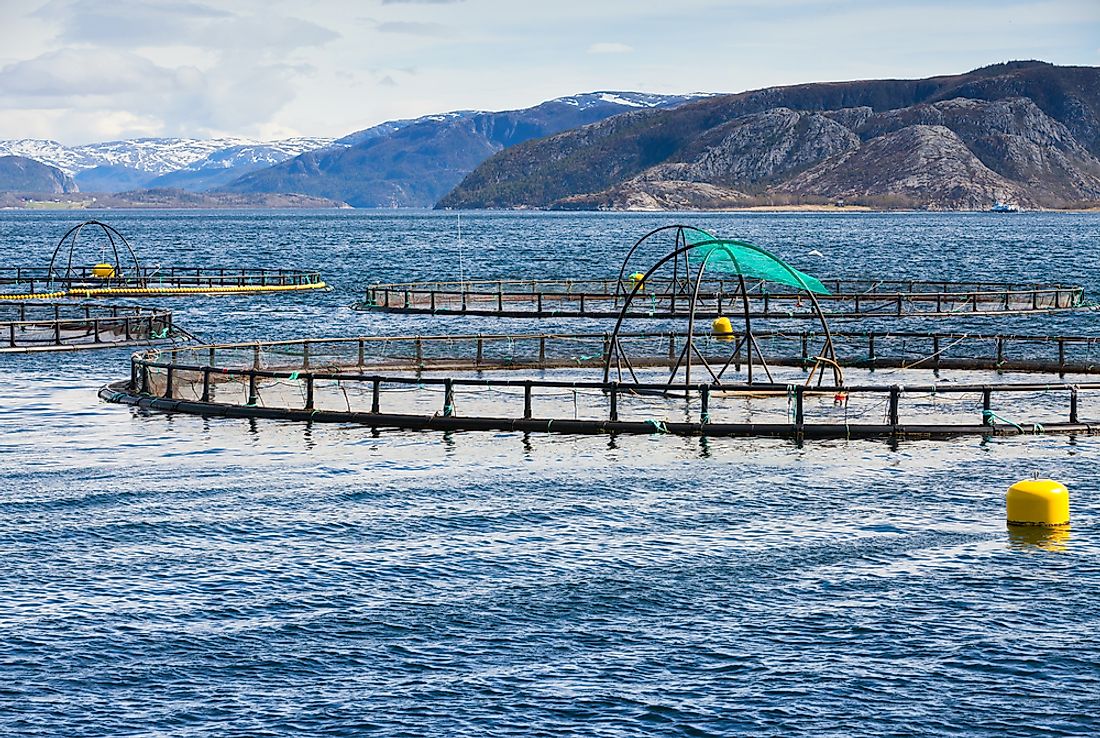What Are The Biggest Industries In Norway?

Norway is a country in northern Europe. Formally known as the Kingdom of Norway, this constitutional monarchy encompasses a total land area of 148,728 square miles and is home to a population of 5,384,209 residents. This Nordic country is well known for providing its citizens with universal health care and a comprehensive social security system. The Norwegian economy is robust with the nation ranking as having the fourth highest per capita income on the planet. The country’s economic engine is fueled by a variety of major industries such as petroleum (or oil) production, hydro-power, aquaculture, shipping, and tourism.
Oil And Gas
Norway’s petroleum industry is extremely important to the nation’s economy. Aside from an array of Middle Eastern countries, Norway holds the title of being the largest oil and gas producer in the world. This particular industry is so important that it accounts for almost half of Norway’s total exports and some twenty percent of its national GDP (gross domestic product). The first discoveries of oil and gas reserves in Norway were made in the North Sea in the 1960s. Since that time this industry has grown to become a very important contributor to the Scandinavian nation’s overall economy.
Hydro-power
Along with oil and gas hydro-power is another major energy sector that plays a key role in fueling the Norwegian economy. The Nordic country is home to a wide array of hydro-power plants which are located throughout the country. Some of these stations that are presently operational include the Aura Hydroelectric Power Station in Sunndal, Evanger Hydroelectric Power Station in Voss, Lysebotn Hydroelectric Power Station in Forsand, and Tyssedal Hydroelectric Power Station in Odda.
Aquaculture
By definition aquaculture is the farming of various sea animals and plants (such as fish, algae, and crustaceans) for food. Norway is regarded as a major world leader when it comes to seafood farming, production, and export. The country’s seafood industry is tied to its geographical location which includes 60,000 miles of coastline situated along the cold waters of the Atlantic Ocean as well as its abundance of fjords teeming with a variety of aquatic life. Over the years Norway has increasingly stepped up its efforts to maintain sustainable fishing practices and presently exports its seafood products to about 140 nations across the globe.
Shipping
Due to its location shipping has always been an important industry in Norway. The country is well known for its history of maritime exploration especially during the time of the Vikings when these adventurers ruled the seas. Today shipping is still vital to the country’s economy with a growing stress being placed on creating more environmentally friendly ways to transport goods. The Norwegian government has ambitious plans to turn their fjords into zero emission zones by the year 2026. This means that any vessel travelling through these areas must operate using electrical power. Also, in keeping with Norway’s ongoing goals to combat climate change, the country has played a key role in propelling the International Maritime Organization’s decision to adopt a policy which aims at drastically cutting emissions from the global shipping industry by at least 50% by 2050.
Tourism
According to figures from 2016, the Norwegian tourism industry accounted for 4.2% of the country’s yearly GDP. Furthermore, one out of every fifteen workers in Norway are employed in some aspect of the lucrative tourism industry. Because of its often frigid and harsh weather conditions, however, the majority of visitors travelling to the Scandinavian country do so from the months of May and August.











